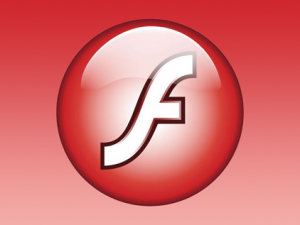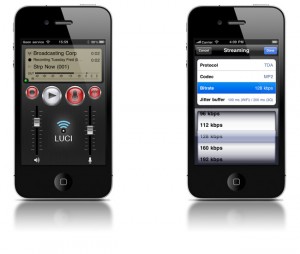
By
Rob ScottApril 15, 2011
Adobe previewed its new video streaming technology at NAB, built on the Adobe Flash Media Server. The new features and capabilities are designed to help stream protected video to mobile devices such as the Apple iPad and iPhone, Motorola Xoom, Samsung TVs and Atrix smartphone.
Last year Adobe introduced HTTP Dynamic Streaming (HDS) for the Flash Platform, which leverages the MPEG-4 fragment container format using H.264/AAC codecs. The company is now adding support for HTTP Live Streaming (HLS), an MPEG2 transport stream used by devices including the iPad 2. Adobe explains that HLS support within the Flash Media Server reduces “the publishing complexity for broadcasters who need to reach browsers supporting HLS through HTML5 (such as Safari) or devices where Adobe Flash is not installed.”
Adobe also demonstrated its next version of the Flash Media Live Encoder, that enables users to “capture a live broadcast stream and publish out to multiple devices including Android, Apple iOS and Samsung TVs.”
You can check out a seven-minute video demo on the Adobe blog.

By
Rob ScottMarch 31, 2011
Netherlands-based Technica del Arte, maker of the LUCI series of broadcast software apps, recently announced that its popular Luci Live software is now available for Mac OSX Snow Leopard or higher (MSRP $450).
Luci Live turns mobile devices into portable recording studios, ideal for journalists who want to quickly record and edit video and audio content for HD streaming and live broadcasts. Macworld reports that TV and radio field reporters are using phones and laptops to cover events in locations such as Egypt, Japan, and Libya where traditional broadcasting techniques have recently been impacted by technical limitations.
As long as reporters have an Internet connection, Luci Live (also available in iPhone and Windows versions) is a viable solution.
Click here for more details regarding the $400 iPhone/iPad app.
By
Rob ScottDecember 12, 2025
Adobe launched its popular creative and productivity apps Photoshop, Adobe Express and Acrobat for ChatGPT this week, enabling users to edit images, animate elements and modify PDFs by simply asking the chatbot. “Now hundreds of millions of people can edit with Photoshop simply by using their own words, right inside a platform that’s already part of their day-to-day,” said Adobe President of Digital Media David Wadhwani. Photoshop, Express and Acrobat for ChatGPT are currently free for ChatGPT users, available via desktop, web and iOS. Adobe Express for ChatGPT has Android support, which is coming soon for Acrobat and Photoshop. Continue reading Adobe Integrates Photoshop, Acrobat, Express with ChatGPT
By
Paula ParisiDecember 11, 2025
Roughly 20 percent of U.S. teens surveyed say they were on TikTok and YouTube “almost constantly” in 2025, with YouTube distinguishing itself for use “by nearly all teens,” according to a new Pew Research study. Ninety percent of teens surveyed say they’ve used YouTube, followed by TikTok and Instagram, with at least 60 percent claiming usage, with Snapchat landing at about 55 percent. Chatbot use is at about 64 percent among respondents, with about 30 percent of teens saying they use companionable AI answer engines daily, led by OpenAI’s ChatGPT (59 percent). Continue reading Pew Research: 30 Percent of U.S. Teens Use Chatbots Daily
By
Paula ParisiDecember 10, 2025
Nielsen Marketing Cloud’s Audience Segments targeting tool is now available across the Amazon Ads marketplace, allowing advertisers to deliver ads across multiple platforms and in different formats while measuring performance throughout the vast Amazon ecosystem. NMC’s Audience Segments data sets provide more than 20,000 custom and syndicated segments in categories ranging from auto, finance and CPG — now targetable to audiences on Amazon platforms including Prime Video, Twitch, Fire TV, Freevee and Amazon.com. The segments are available through the Amazon DSP and Amazon Marketing Cloud data clean room. Continue reading Nielsen Audience Segments Is Available Across Amazon Ads
By
Paula ParisiDecember 9, 2025
Meta Platforms has acquired AI wearables firm Limitless, a five-year-old startup based in Denver. Limitless’ key product is an AI-powered pendant that records audio and generates summaries. “We’re excited that Limitless will be joining Meta to help accelerate our work to build AI-enabled wearables,” Meta said via a statement. Meta has had success in the wearables space with its Ray-Ban Meta smart glasses, which feature a Meta AI digital assistant. Meta’s further push into AI devices that consumers can use casually in everyday situations comes as the company reportedly considers downsizing its metaverse investments. Continue reading Meta Platforms Acquires Limitless, a Startup in AI Wearables
By
Paula ParisiDecember 4, 2025
Microsoft has updated the Xbox platform across PC, mobile, cloud and handheld gaming. Gaming Copilot, in beta, is now available on the Xbox mobile app, adding a “personal gaming sidekick” in your pocket. On Windows 11 handhelds, the “full screen experience” (FSE), which debuted on the ROG Xbox Ally, “is now available to all players on even more Windows 11 handhelds,” says Microsoft. Players who stream via cloud gaming can now choose the resolution on select titles, with support for up to 1440p. Plus, the Xbox app is coming soon for the Amazon Fire TV Stick 4K. Continue reading Game Pass Grows as Microsoft Updates Xbox Across Devices
By
Paula ParisiDecember 2, 2025
Google has signed on to provide collaborative multi-cloud networking with Amazon using its new “AWS Interconnect – multicloud,” now in preview. Amazon says the new collaboration will simplify multi-cloud networking via managed, private, on-demand access to cross-cloud connectivity. The jointly engineered solution leverages Google’s Cross-Cloud Interconnect technology. The idea is “to enable customers to easily build enterprise-grade applications that span both Google Cloud and AWS environments,” Amazon explains, pointing out that the adoption of multi-cloud applications is rapidly accelerating, driven at least in part by the rise in use of AI. Continue reading Amazon and Google Team on High-Speed Multi-Cloud Service
By
Paula ParisiDecember 2, 2025
Amazon has added agentic AI capabilities to Amazon Connect, the neural text-to-speech tool that provides AI-powered customer service support and analytics in real time. Connect is capable of neural text-to-speech in more than 30 languages and also delivers automated speech recognition. Leveraging advanced speech models from Nova Sonic, the Connect agents “deliver natural, human-like conversations, responding with the right pace, tone, and understanding across multiple languages and accents,” Amazon says. The company has also integrated third-party automated speech recognition and text-to-speech solutions from Deepgram and ElevenLabs with Connect. Continue reading Amazon Adds Agentic AI to ‘Connect’ Customer Service Tool
By
Paula ParisiDecember 1, 2025
Amazon Web Services is marking its entry into the lucrative business of providing the U.S. government with artificial intelligence and high-performance computing services via purpose-built infrastructure for which it has committed up to $50 billion in construction and equipment. The investment “will add nearly 1.3 GW of compute capacity across AWS Top Secret, AWS Secret, and AWS GovCloud (U.S.) across all classification levels,” Amazon says, adding that the commitment “expands access to AWS’s trusted infrastructure” and advances America’s AI leadership and enables U.S. agencies “to accelerate discovery and decision-making.” Continue reading AWS Earmarking $50 Billion for Government AI Infrastructure
By
Paula ParisiNovember 25, 2025
Two months after its launch, Meta Platforms is overhauling its Horizon Hyperscape Capture app, moving the rendering process from the cloud to on-device for lower latency and mobility. Hyperscape Capture, unveiled at Meta Connect in September, lets you use a Meta Quest 3 or Quest 3S headset to scan and generate a real-world 3D environment — like your office or living room — to share as a photorealistic VR replica. Rather than cloud-rendered captures that were accessible solely within the app, Hyperscape Capture can now generate a Hyperscape as a Horizon Worlds destination — with audio. Continue reading Meta Updates Its Horizon Hyperscape with 3D World Capture
By
Paula ParisiNovember 25, 2025
DJI’s Osmo Action 6 is its first variable aperture action camera, offering f/2.0 to f/4.0. Coupled with a new 1/1.1-inch square CMOS sensor, DJI promises better low-light imaging with dynamic range of up to 13.5 stops. The new flagship-level also has a 4K custom mode that leverages the large sensor to allow users to “shoot first and crop later in post-production” to frame images, making it easy to edit for different aspect ratios and social platforms. “Creators no longer need to manually position the camera horizontally and vertically to get their shot,” according to DJI. Continue reading DJI Osmo Action 6 Camera’s Variable Aperture Called a First

